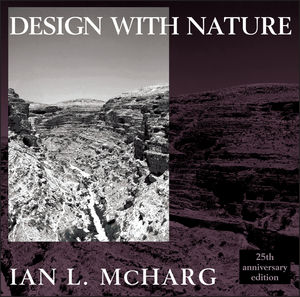
AKI
BOOK
CLUB
Welcome to our own Aki Book Club!
TAS has started our very own Architecture Book Club, with the intention of advocating architecture and landscape architecture students' interest in architecture theory by supplementing students with literature to further their knowledge of architectural theory.
A list of Architecture & Landscape Architecture books recommended by tutors can be found here, where digital copies of most books are shared in the online library as well. An archive of architecture books, that can be maintained and referred to for the existing and incoming students, will be curated continuously by our Education Committee.
Bi-semestral Book Review sessions on Zoom are currently being planned out, where Tutors/Teaching Assistants and students can share their thoughts on the books.
Architecture Books
Delirious New York
Rem Koolhaas
The book serves as a retroactive manifesto for Manhattan between 1850 and 1960, analyzing the development of architecture and urban design throughout New York's history from the founding of New Amsterdam by the Dutch, to the design of the Headquarters of the United Nations by Le Corbusier. Rem Koolhaas describes the concept of 'Manhattanism', the theory of the creation and functioning of the city of New York, at length in the book.

Architecture History and Culture
New York City
The Death and Life of Great American Cities
Jane Jacobs
Jane Jacobs writes about what makes streets safe or unsafe; about what constitutes a neighborhood, and what function it serves within the larger organism of the city; about why some neighborhoods remain impoverished while others regenerate themselves. She writes about the salutary role of funeral parlors and tenement windows, the dangers of too much development money and too little diversity. Jane Jacobs's monumental work provides an essential framework for assessing the vitality of all cities.

Architecture History and Culture
Urban Planning
Intermediate
Invisible Cities
Italo Calvino
The book explores imagination and the imaginable through the descriptions of cities by an explorer, Marco Polo. The book is framed as a conversation between the aging and busy emperor Kublai Khan, who constantly has merchants coming to describe the state of his expanding and vast empire, and Polo.
The majority of the book consists of brief prose poems describing 55 fictitious cities that are narrated by Polo, many of which can be read as parables or meditations on culture, language, time, memory, death, or the general nature of human experience.

Architecture Imagination
Easy
Landscape Architecture Books
Design for human ecosystems: landscape, land use, and natural resources
Lyle, J.
The book provides a framework for thinking about and understanding ecological design, along with a wealth of real-world examples that bring to life Lyle's key ideas. Lyle traces the historical growth of design approaches involving natural processes, and presents an introduction to the principles, methods, and techniques that can be used to shape landscape, land use, and natural resources in an ecologically sensitive and sustainable manner. Lyle argues that careful design of human ecosystems recognizes three fundamental concerns: scale (the relative size of the landscape and its connections with larger and smaller systems), the design process itself, and the underlying order that binds ecosystems together and makes them work. He discusses the importance of each of these concerns, and presents a workable approach to designing systems that effectively accounts for all of them.

Design Philosophy
Ecology
Design with nature
McHarg, I. L., & Mumford, L.
The book has garnered a great deal of notoriety in the fields of both landscape architecture and conservationism. Taken as a whole, the prose can be lofty and is, in certain parts, somewhat dated (having never been updated), but generally it is both detailed and philosophical: a kind of walk through the woods with Ian McHarg. It gives an excellent understanding of the foundation of environmentally-sensitive planning.

Design Philosophy
Ecological urbanism: A framework for the design of resilient cities
Spirn, Anne Whiston
This overview describes the roots of ecological urbanism, with an emphasis on the Anglo-American tradition, and identifies fundamental concepts and principles. The literature is vast, and a detailed review is impossible here. This introduction provides historical context and a framework to guide more focused research and more comprehensive reviews of the literature and to advance the practice of ecological urbanism.

Design Philosophy
General Landscape Archi Theory
Easy
ls landscape ... ?: essays on the identity of landscape
Doherty, G., & Waldheim, C.
The book surveys multiple and myriad definitions of landscape. Rather than seeking a singular or essential understanding of the term, the collection postulates that landscape might be better read in relation to its cognate terms across expanded disciplinary and professional fields. The publication pursues the potential of multiple provisional working definitions of landscape to both disturb and develop received understandings of landscape architecture. These definitions distinguish between landscape as representational medium, academic discipline, and professional identity.

Design Philosophy
Intermediate
Non-Architecture Books
The Medium is the Massage: An Inventory of Effects
Marshal McLuhan
The Medium is the Massage is Marshall McLuhan's most condensed, and perhaps most effective, presentation of his ideas. Using a layout style that was later copied by Wired, McLuhan and coauthor/designer Quentin Fiore combine word and image to illustrate and enact the ideas that were first put forward in the dense and poorly organized Understanding Media. McLuhan's ideas about the nature of media, the increasing speed of communication, and the technological basis for our understanding of who we are come to life in this slender volume. Although originally printed in 1967, the art and style in The Medium is the Massage seem as fresh today as in the summer of love, and the ideas are even more resonant now that computer interfaces are becoming gateways to the global village.

Technology & Media

